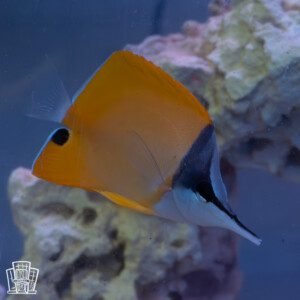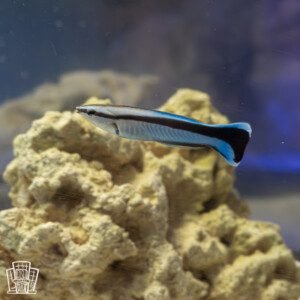Description
- Scientific Name: Oxycirrhites typus
- Common Names: Longnose Hawkfish, Long-nose Hawk
- Maximum Length: 5.1 inches (13 cm)
- Minimum Aquarium Size: 30 gallons (113 liters) for a single fish; 50 gallons (189 liters) or larger for pairs to support their perching and territorial behavior.
- Foods and Feeding Habits: Carnivorous, preying on small crustaceans, fish, and invertebrates in the wild. In aquariums, offer frozen mysis shrimp, brine shrimp, chopped seafood, or high-quality marine pellets. Feed small amounts 1-2 times daily to match their predatory habits.
- Reef Safety: Reef-safe with caution; they may eat small ornamental shrimp or tiny fish but leave corals unharmed. Monitor in reef tanks with small inhabitants.
- Temperament: Semi-aggressive, territorial toward similar species or small tankmates. Best kept singly or in pairs with ample perching spots and non-aggressive companions like larger gobies or wrasses.
- Description: The Longnose Hawkfish is a bold addition to marine tanks, known for its striking look and vigilant behavior. Its red body is adorned with a white, grid-like pattern of lines, a long, pointed snout, and large, observant eyes. Native to the Indo-Pacific, from the Red Sea to Hawaii and the Marquesas Islands, they perch on coral reefs and gorgonian fans at depths of 10-100 meters. Hobbyists praise their curious perch-and-stalk routine, but note they may nip at tiny tankmates, requiring careful selection. A tank with live rock or coral perches and a tight lid to prevent jumping ensures they thrive.
Fun Facts:
- They perch like sentinels on corals, using pectoral fins to “stand” and scan for prey with hawk-like precision.
- In the wild, they often share burrows with moray eels, using the eel’s lair as a safe haven while hunting nearby.
- Their grid-like pattern can intensify under stress, signaling aggression to rivals in a vivid visual display.





